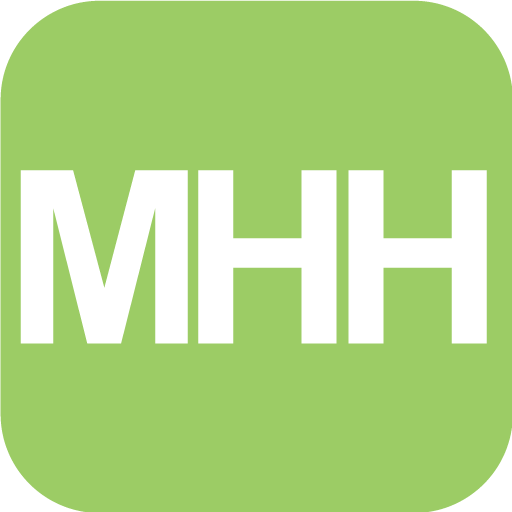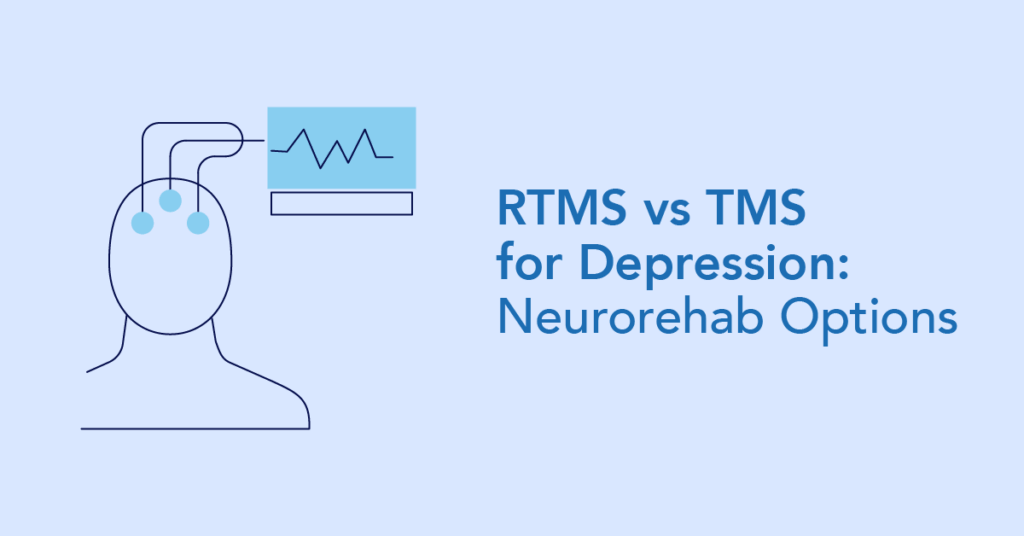Differences between TMS and rTMS for depression:
- Both are non-invasive brain stimulation therapies
- rTMS is a more specific type of TMS
- Your choice may depend on treatment goals and provider availability
When depression sticks around despite treatment with medication or therapy, neuromodulation treatments, such as transcranial magnetic stimulation, or TMS, and repetitive TMS (rTMS), can be life-changing. Though their names are similar, these therapies differ in their technique, effectiveness and application. Let’s dive into how they work, their benefits and how you can choose the right path for your recovery. We’ll also take a look at newer options, such as deep TMS therapy, abbreviated as dTMS. By comparing dTMS/TMS success rates, you can make an informed decision about which treatment is the best option for you.
What Is TMS and How Does It Work?
TMS is a type of brain-stimulating therapy that uses magnetic fields to excite nerve cells in brain regions linked to mood regulation. It’s a noninvasive treatment option for depression and other conditions.
During a session of TMS, a magnetic coil is placed against the scalp, targeting the prefrontal cortex, the brain area responsible for mood control. The coil delivers painless magnetic pulses to activate underactive neurons.
TMS is ideal for those who haven’t found relief with antidepressants or want to avoid common side effects, such as weight gain or fatigue. Unlike electroconvulsive therapy, TMS requires no anesthesia and doesn’t take any time to recover from.
What Makes rTMS Different From Traditional TMS?
RTMS is the modern, optimized version of traditional TMS. It involves repeated applications of TMS under precise conditions designed to maximize its effectiveness.
Traditional TMS uses single or intermittent pulses, often for diagnostic purposes or mild stimulation. In contrast, rTMS delivers rapid, repetitive pulses to induce lasting changes in brain activity. This repetitive approach enhances neuroplasticity, helping the brain relearn healthier patterns.
Unlike its predecessor, rTMS follows standardized protocols backed by extensive research. The effects of high-frequency (>1 Hz) and low-frequency (<1 Hz) treatments are well-understood and can be utilized to treat different types of mental health problems or other conditions.
In general, high-frequency rTMS increases activity in the brain, which means it can be a useful treatment for depression. Meanwhile, low-frequency rTMS is more likely to be used to treat anxiety, as it suppresses brain activity in specific regions.
Today, traditional TMS is rarely used outside research settings, as rTMS has become the gold standard. In addition to being a useful treatment for depression and other mental health conditions, it can be helpful for pain and nervous-system-based conditions.
A newer variant, dTMS, uses an H-coil to stimulate deeper brain regions. Due to its ability to affect deeper, less accessible parts of the brain, dTMS therapy is sometimes used for complex cases where rTMS hasn’t been effective.
dTMS/TMS Success Rates and Indications
In addition to depression, rTMS and sometimes dTMS therapy can also be used to treat the following conditions:
- Treatment-resistant depression
- Obsessive-compulsive disorder
- Post-traumatic stress disorder
- Tourette disorder
- Generalized anxiety disorder
- Chronic pain syndrome
- Bipolar disorder
- Movement disorders, such as Parkinson’s disease
While newer options such as dTMS work even better for really tough cases, rTMS is still the go-to choice for most people because it’s easier to access and has a lot of research backing it up. Think of rTMS as the benchmark in brain stimulation therapy. It’s reliable and widely available.
Side Effects and Treatment Expectations
Many people worry that TMS will hurt, but this isn’t the case. Some people experience mild scalp discomfort or tenderness after the session, but the treatment itself is painless. Most patients describe the sensation as a tapping or clicking feeling on the scalp.
Some people have side effects that linger after the session, but these are typically mild. For example, you might feel a bit lightheaded or tired. Headaches are a possible side effect, but they usually go away after the first few sessions.
One serious side effect to be aware of is the possibility of having a seizure in response to the treatment. Research suggests that up to 3% of people with epilepsy will experience a seizure after a session of rTMS. However, in people who don’t have epilepsy, the risk is extremely low at less than 0.01%.
It’s important to wear hearing protection during a session of rTMS. This is because the clicking noise created by the equipment can be very loud and cause hearing oversensitivity. Tinnitus is a possible side effect, although it usually doesn’t last long after the session.
It’s important to let your provider know if you experience any side effects from your rTMS or dTMS therapy. They can work with you to minimize the side effects and make the treatment as comfortable as possible.
How to Decide Which Option Is Right for You
For people suffering from depression, rTMS is an option worth considering. That’s particularly the case if you don’t want to or can’t take antidepressant medications or if you’ve tried them but they didn’t work for you. It’s a treatment that’s widely available and has proven results for depression.
If you’ve had rTMS and it hasn’t had the desired effect, you might consider dTMS. Although it’s not as well-researched or widely available, dTMS therapy can target deeper brain regions to get to the root of the problem and give you relief from treatment-resistant depression.
Your Path to Healing Starts Here
Understanding the differences between rTMS, dTMS and traditional TMS empowers you to advocate for your needs while receiving care. At Mental Health Hotline, we can help you connect with clinics that prioritize rTMS as the modern standard for depression treatment.
Depression can make you feel isolated, but you don’t have to navigate recovery alone. With ongoing improvements in dTMS/TMS success rates, brighter days are within reach.
Editorial Team
-
 Written By: Mental Health Hotline
Written By: Mental Health HotlineMental Health Hotline provides free, confidential support for individuals navigating mental health challenges and treatment options. Our content is created by a team of advocates and writers dedicated to offering clear, compassionate, and stigma-free information to help you take the next step toward healing.


